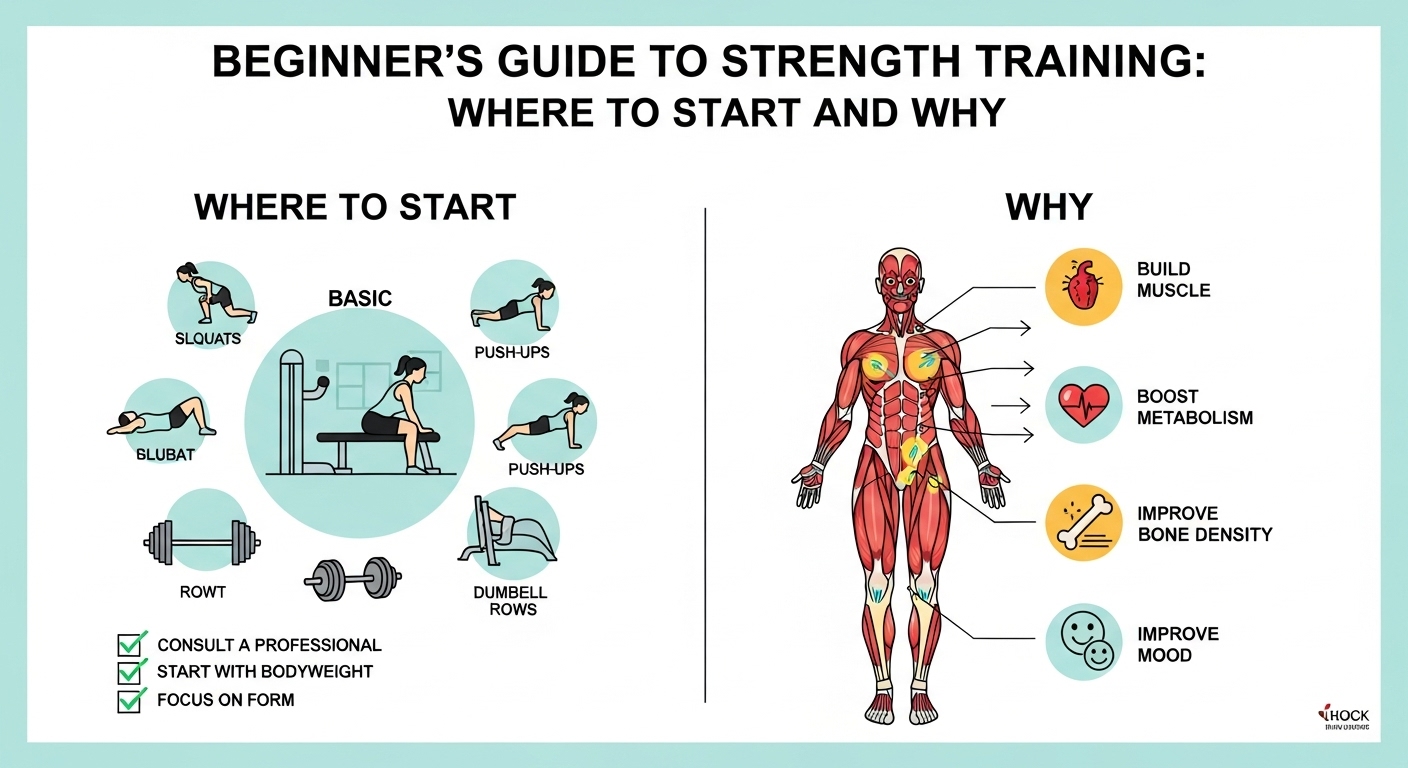Beginner’s Guide to Strength Training: Where to Start and Why
Beginner’s Guide to Strength Training: Where to Start and Why
Strength training isn’t just for bodybuilders or athletes — it’s one of the most effective ways to improve overall health, boost confidence, and build a strong foundation for an active life. If you’re new to lifting weights or using resistance, this guide will walk you through where to start and why strength training matters.
Why Strength Training Matters
Strength training involves using resistance — whether it’s free weights, machines, resistance bands, or even your own body weight — to build muscle strength and endurance.
Here’s why it’s worth your time:
-
Improves metabolism: Muscle tissue burns more calories than fat, even at rest.
-
Protects joints and bones: Strength training increases bone density and joint stability.
-
Enhances daily function: Everyday tasks like lifting groceries or climbing stairs become easier.
-
Boosts mental health: Lifting weights releases endorphins that reduce stress and improve mood.
-
Supports longevity: Studies show strength training reduces the risk of chronic diseases and improves overall quality of life.
How to Get Started Safely
Before jumping into a workout routine, it’s important to start with a plan that suits your fitness level and goals.
1. Start with Bodyweight Exercises
If you’re completely new, begin with bodyweight movements like squats, push-ups, lunges, and planks. These exercises build a solid foundation and help you learn proper movement patterns before adding resistance.
2. Learn Proper Form
Good form prevents injury and ensures you’re targeting the right muscles. Consider working with a trainer for a few sessions or watching credible tutorials to master the basics.
3. Choose the Right Equipment
You don’t need a full gym setup. Start simple:
-
Dumbbells or resistance bands
-
A yoga mat for comfort
-
A sturdy chair or bench
As you progress, you can explore barbells, kettlebells, or gym machines.
4. Follow a Structured Routine
Focus on full-body workouts 2–3 times per week.
A sample beginner routine might include:
-
Squats (legs)
-
Push-ups (chest, arms)
-
Dumbbell rows (back)
-
Planks (core)
Rest at least one day between sessions to allow your muscles to recover.
Key Principles for Progress
1. Progressive Overload
Gradually increase weight, repetitions, or intensity over time. This challenges your muscles to grow stronger.
2. Consistency Over Perfection
It’s better to train regularly with moderate effort than to overdo it once in a while. Aim for steady progress.
3. Recovery and Nutrition
Muscles grow when you rest — not just when you train. Get enough sleep and fuel your body with protein-rich, balanced meals.
Common Mistakes to Avoid
-
Skipping warm-ups or cool-downs
-
Using weights that are too heavy
-
Neglecting proper form
-
Ignoring rest days
Remember, strength training is a journey — not a race. Patience and consistency always pay off.
Final Thoughts
Starting strength training can feel intimidating, but everyone begins somewhere. Focus on learning the basics, building consistency, and celebrating small victories along the way. Over time, you’ll notice not just physical changes, but greater confidence and energy in your daily life.

